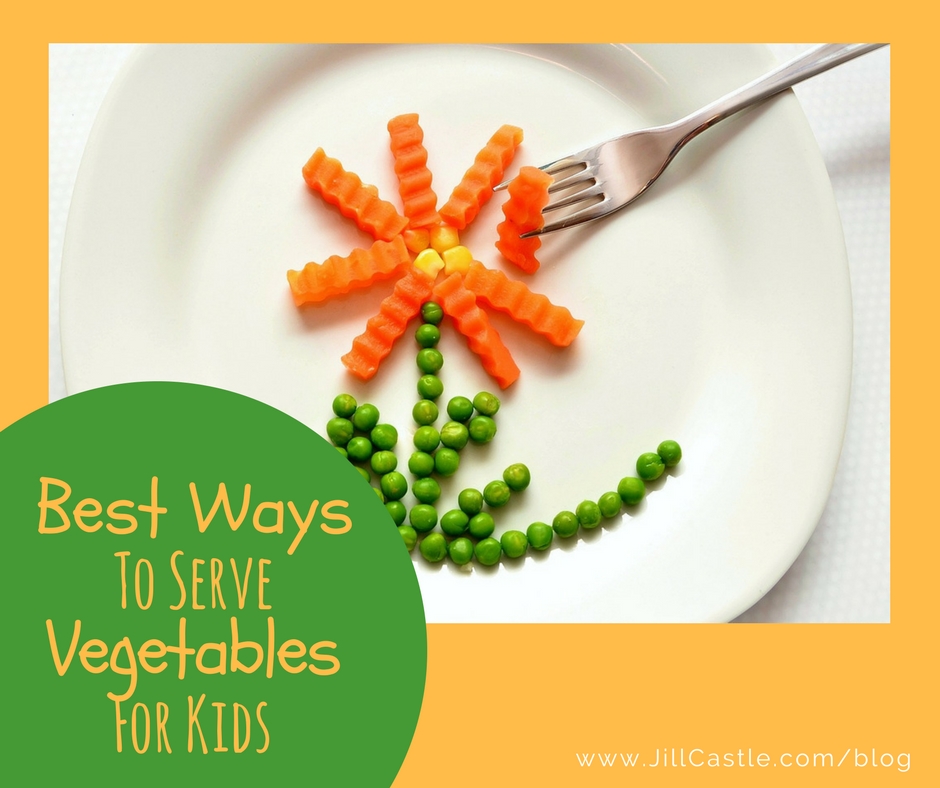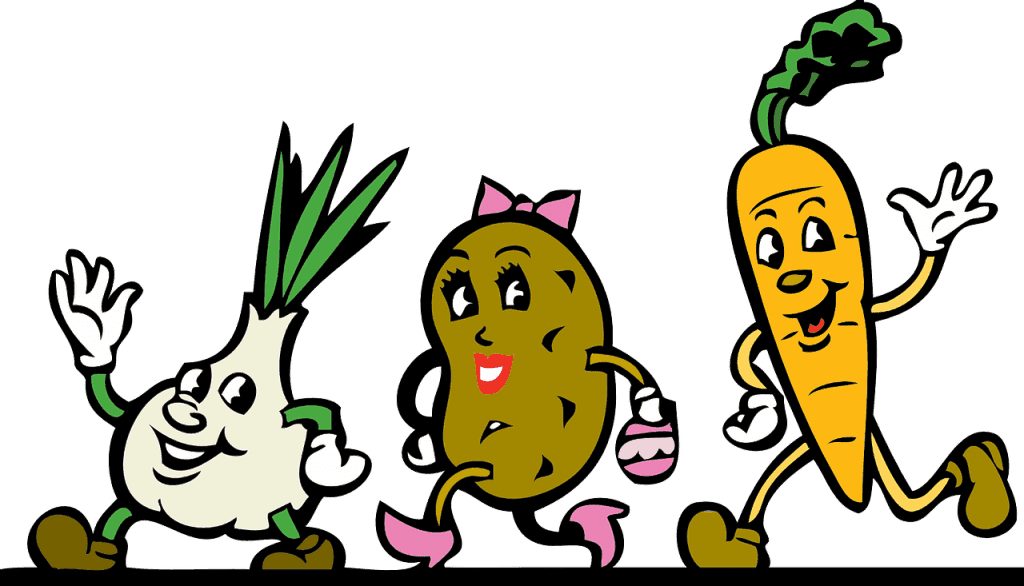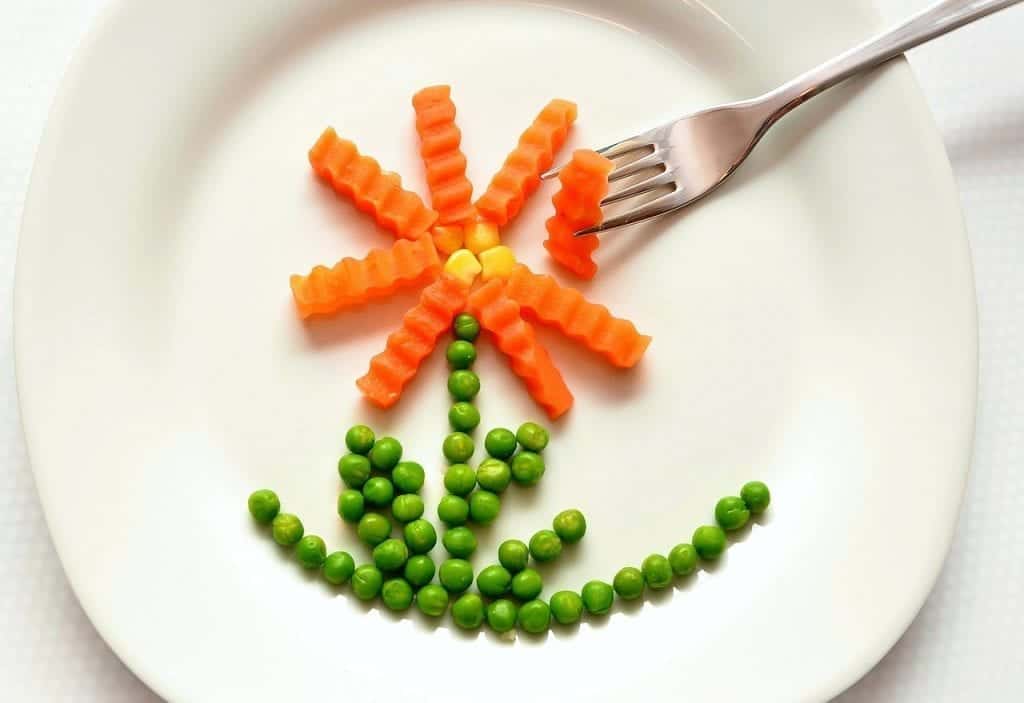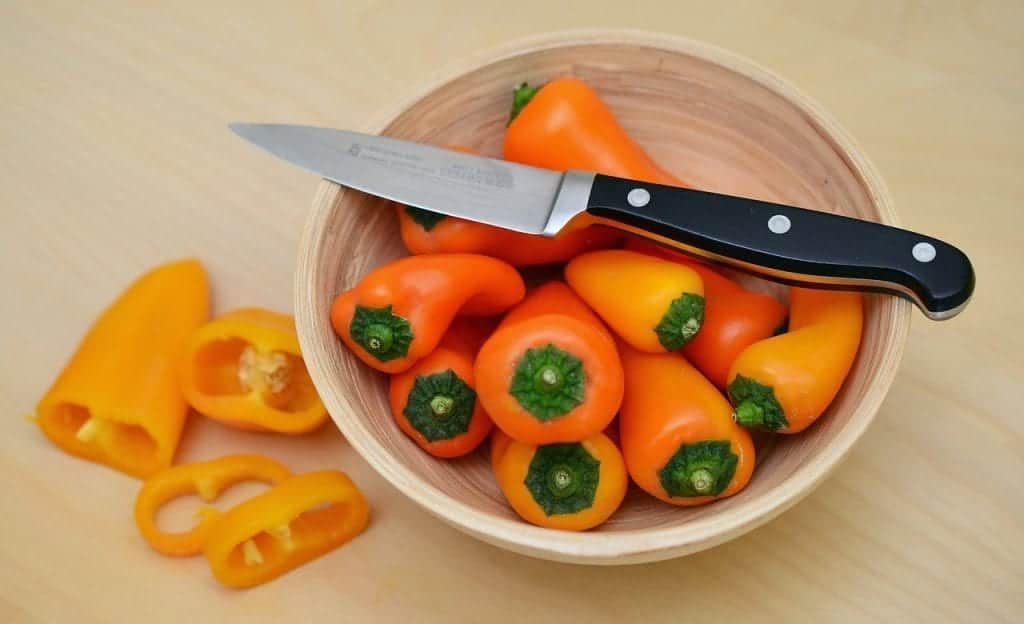Vegetables for Kids: 10 Different Ways to Serve Them
March 29, 2017
We all want our kids to eat their veggies! Learn 10 different ways to serve vegetables to kids.
Parents always ask me about helping their kids eat more vegetables. I say it’s how you serve veggies to kids that matters the most.
I understand the concerns. When you look at the recent National Health and Nutrition Examination Survey data reflecting the food intake patterns, it’s clear the veggie challenge starts early!
Only 30% of one year-olds are eating vegetables, and those are typically whole and mashed potatoes.

Picky Eaters and Veggies
Of all the foods kids could be picky about, vegetables rank the highest. This is due to, in part, the natural bitterness of vegetables, which many children need to learn to like, which takes time.
The other part is that children may not be getting enough exposure to a variety of veggies, prepared in different ways.
Veggies Need to be Appealing
Other research helps understand why kids are hesitant about vegetables.
The flavor and taste preference research tells us that for kids to be willing to try new food (which could be licking, tasting, chewing or eating), it has to look good and taste good.
You can read more about helping your child try new foods, and in my workbook for parents, called Try New Food.
10 Different Ways to Serve Vegetables for Kids
I’ve got several ways you can serve vegetables for kids to help spark their interest in tasting them, and encourage a lifelong habit of eating them.

1. Use a Dip for Veggies
From good old Ranch dressing to homemade Greek yogurt based versions, using a dip can be a vehicle for enticing even the pickiest of eaters. Try hummus, black bean dip, salsa, guacamole, nut butter, syrup, peanut sauce, and even ketchup!
2. Roast Vegetables
Roasting vegetables brings out their natural sweetness. The key is in the caramelization, a chemical process whereby the sugars in vegetables are “browned,” releasing a sweet, nutty flavor. Goodbye bitter, hello mild sweetness! Try these roasted carrots!
3. Blend Them In (But Don’t Hide Them)
Smoothies are beloved by many children. And while I am not a big advocate of “hiding” veggies, blending some spinach or kale into a fruit smoothie is a great way to boost nutrition and include vegetables in tasty ways.
Remember, involve your child in making smoothies, too! Have him add veggies and watch them disappear as you blend.
4. Salad-ify Them
Sweeten up your dinner salads with fruit. Add strawberries, blueberries, peach or orange sections to your salads to boost color and entice eating.
Toss with some olive oil and a spritz of lemon juice to keep the flavor fresh, light and zesty.

5. Make a Cute Picture with Vegetables
Toddlers and preschoolers will find a clever picture made with veggies hard to resist! Get creative with faces, pictures of school, houses, flowers, or a tree.
Have your child make their own picture using veggies and watch a few slip into his mouth!
6. Skewer Veggies
Cubes of cheese and veggies on a stick make boring vegetables look good to eat. Use little toothpicks instead of long skewers and be sure to supervise!
7. Choose Sweeter Vegetable Varieties
Choose the sweetest veggies you can find if you need to ease your child into eating them.
Yams, sweet potatoes, squash, peas, and carrots are good ones to choose first.
8. Baby Vegetables
Have you seen the emergence of baby veggies?
Baby carrots, baby peppers, baby eggplant, baby artichokes and so on.
These “baby” versions have a milder flavor and in the case of lettuces, have a softer, more tender texture than their mature counterparts.
9. Don’t Overcook Them
I once watched a relative of mine cook green beans. She started them at 3:30 pm in the afternoon and didn’t serve them until 6 pm! They sat cooking on the stove for over 2 hours…they were tasty (she had added onions and bacon), but they were mushy.
For kids, blanch or cook vegetables to a tender-crisp texture. They’ll be heated and cooked through, but your child will still get a “pop” when he bites into them.
10. Add Flavors…Even Fat and Salt
Butter, olive oil, vegetable oil and a sprinkling of salt can turn bland, flavorless veggies into something yummy to eat.
How do you serve vegetables for kids?











